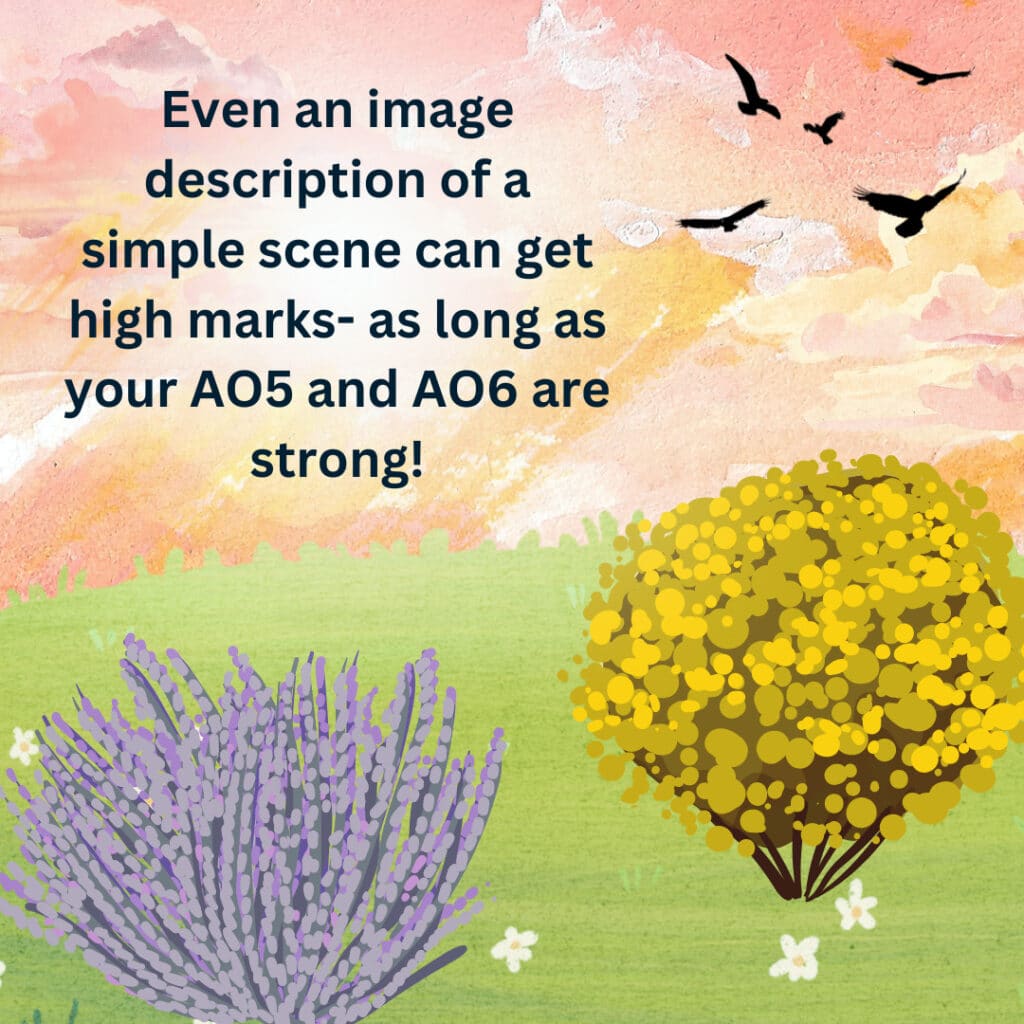Writing: What the Examiner is Looking For
Writing: What the Examiner is Looking For Revision
What are AOs?
AO stands for Assessment Objective.
There are 6 categories that are used to assess answers by the examiners.
It is important to make sure you include all the requirements, or ingredients, in your answer to get top marks.
In this section we will be focusing on two Assessment Objectives for your writing exam, which are AO5 and AO6.
AO5: What does it mean?
Ao5 requires you to:
- Communicate clearly, effectively and imaginatively, selecting and adapting your tone, style and register for different forms, purposes and audiences.
- Organise information and ideas, using structural and grammatical features to support coherence and cohesion.

Example:
“Golden light, a final glow before the sun dips below the horizon and the day dissolves. The moor is as still as the secrets buried beneath it, holding its breath underneath the diminishing sky. The sunset’s last wisps of crimson find themselves enveloped by gentle brushstrokes of black night. All is still. All is quiet. The heather and gorse fade into obscurity as the sun finally slips behind the tor.”
See if you can identify the range of sophisticated vocabulary, language techniques, and structural elements that have been used to create a vivid image in the reader’s mind.
Because the mark scheme asks for ‘a range of vocabulary‘, it is important to know a range of higher-level words so you can use them confidently in the exam.
Colourful imagery like ‘golden’, ‘crimson’ and ‘black’ creates a vivid impression. Furthermore, the moor is personified as ‘holding its breath’. Imagery and personification are both great language techniques to use in descriptions!
Structural devices like short sentences and repetition make the reader pause and contemplate the scenery, adding dramatic effect as the silence and stillness is emphasised. Try to use similar structural techniques in your own descriptions!
The tone is consistent throughout, and the writer has used an imaginative voice that is suitable for a description. Remember that when you are describing, you shouldn’t use the word ‘I’, and you definitely shouldn’t write a story! You simply need to describe what can be seen, heard, touched, smelled, or tasted.
AO6: What does it mean?
- You must use a range of vocabulary and sentence structures for clarity, purpose and effect.
- You should have consistently accurate spelling, punctuation and grammar.

Example:
“The night deepens. Long shadows lengthen and stretch into the gaps between rocks, painting them inky black. Only the bleating of distant flocks breaks the silence. The stars, the only faint illuminations in a frozen sky, stare down at the nothingness; an unmoving and unchanging mass of sightless watchers.
In this answer, a range of sentence lengths are used. For example, ‘The night deepens.’ is a short sentence to engage the reader and draw their attention to the scene.
There is also a sophisticated use of language techniques such as personification, metaphor, and alliteration. See if you can spot how these have been used!
Importantly, for AO6, spelling and punctuation is used correctly here, and a sophisticated punctuation mark like a semicolon will impress the examiner, as it shows a good understanding of how to vary sentence structures.




